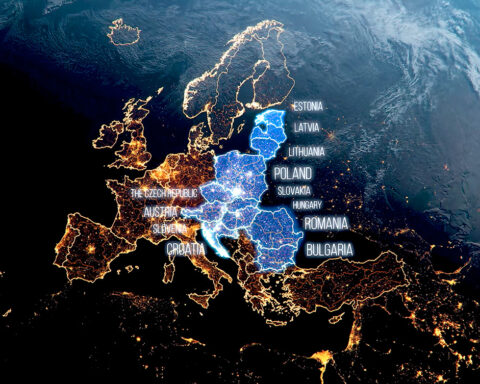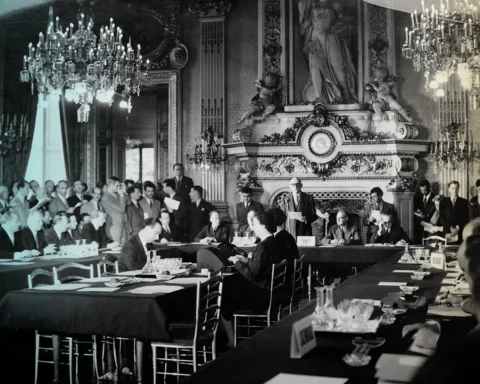“If this country is ever demoralized, it will come from trying to live without work,” Abraham Lincoln, the American president from 1861 to 1865, famously said. Though directed at the United States, this wisdom is universal. In the long run, countries without an effective employment market, without citizens ready to work productively, cannot flourish or even maintain their current level of development.
It has been one of the pillars of Western civilization since antiquity. “Pleasure in the job puts perfection in work,” wrote Aristotle, a Greek philosopher. Twenty-three centuries later, American entrepreneur Henry Ford expanded on this concept, stating, “The man who has the largest capacity for work and thought is the man who is bound to succeed.”
it is always good to remember the old saying of Mark Twain that “a pessimist is a well-informed optimist.” After all, 2022 is a time of war in Ukraine, rising inflation, problems with energy prices, and increasing political instability
The importance of work for personal development and the prosperity of entire countries and regions of the world has been central during virtually every period of history. The way the employment market functions is one of the most critical competitive advantages in the modern world. It can be seen that awareness of this is growing all the time in the countries of Central Europe. This is also one of the reasons why the dynamics of economic development in this region are higher than in the western part of the continent.
No worries about jobs
A more dynamic labor market in Central Europe than in Western Europe has long been a fact of life. Eurostat data brilliantly confirm this. As of September 2022, the average level of unemployment in the EU was at 6%. The unemployment rate was above this average in countries such as Spain (12.8%), Greece (10.8%), Italy (7.9%), and France (7.2%). Below this line, by contrast, are primarily central European countries, e.g., Estonia (5.6%), Austria (4.8%), Bulgaria (4.2%), Hungary (3.7%), Poland (2.5%), and Czechia (2.2%).
But it is nothing new; these differences have been well known for years as complex numbers about unemployment are published frequently. But it gets interesting when one asks Europeans how they assess their countries’ employment market. A poll was conducted by Eurostat in the summer of 2022, asking Europeans how they judged the employment situation in their countries. At the EU level, on average, 44% of respondents estimated it as good and 51% as bad.
3 Seas perspective on unemployment
Looking closer at the figures, it is easy to see differences between parts of Europe. Scandinavian countries and most of the CEE states are clearly below this average. For instance, in Czechia, 73% of people saw the labor market as good and 24% as bad. Results were similar in Lithuania, where 54% view the labor market situation positively and 40% negatively. Consistently, polling shows that 62% of Poles and 65% of Slovakians do not worry about their job situation (only 32% of Poles and Slovakians had a negative opinion about the labor market).
Things look different when checking the results of this survey in countries in the western and southern parts of Europe. In Greece, only 6% of respondents view the job situation as good; 94% call it “bad.” 78% of Spaniards and Italians rate their labor market negatively, and a mere 20% of Spaniards and 21% of Italians have positive views on it. Only 35% of respondents call the job situation in France good, while 57% call it bad.
Of course, this does not mean that you should expect to see Italian or French immediately start migrating to Central Europe in search of work. The purchasing power of wages or accumulated wealth in the West is still higher than in the CEE region. But there is undoubtedly more optimism in Central Europe, looking at the future through much brighter glasses. And optimism and a good attitude are usually (at least) half the battle.
For well-informed optimists only?
Anyway, this optimism does not only apply to the labor market. It can also be seen in other areas of life. For example, in public services. It would seem that the quality of life in the former communist countries is lower than in the West. However, the subjective perception is different. This can be seen when one traced the survey results when respondents answered the question, “How would you judge the provision of public services in your country?”.
Overall, public services are viewed positively by 52% of Europeans and negatively by 44%. But – as before – positive evaluations are primarily generated by residents of Northern and Central European countries. In Czechia, 70% of respondents see their public services as good and 26% as bad. Similarly, in Latvia. 59% of citizens estimate them positively, and 34% negatively. In Hungary, it is 61% to 38% in favor of positive evaluations.
At the opposite end of the scale, we have countries such as France, where 43% of citizens rate public services positively (51% bad), Italy (37% yes, 61% no), or Portugal (32% positive, 63% negative). Of course, in many Western countries (above all, Luxembourg, the Netherlands, Germany, and Malta), the prevalence of high ratings over low ratings for local public services is high. Still, in general, reading this survey, it is hard to free oneself from the conviction that in the old EU member states – as opposed to the new ones – there is growing discontent about the quality of life.
The best confirmation of this difference comes from a study in which respondents from EU countries answered a question about the future. On average, 18% of Europeans expect the situation in their countries to improve in the next 12 months – 32% think it will stay the same, and 47% say it will get worse.
But when looking at the countries with the highest percentage of people expecting things to go wrong, it includes the wealthiest, most developed EU countries: the Netherlands (61% think things will get worse, 29% expect no change), Germany (63% for no, 23% no change), Sweden (55% expect things to get worse, 30% say things will stay the same). Among the biggest optimists in Europe, you may find such countries as Malta (46% of Maltese expect change for the better in the next 12 months), Italy (29% of optimists), but also Romanians (29% of residents hoping for better), Poles (22%) or Bulgarians (20%).
Of course, it is always good to remember the old saying of Mark Twain that “a pessimist is a well-informed optimist.” After all, 2022 is a time of war in Ukraine, rising inflation, problems with energy prices, and increasing political instability. All of this makes it hard not to view the optimists with some suspicion. But despite this, the preponderance of optimists looking gleefully to the future in Central European countries offers hope for a better tomorrow. But will they be able to transmit this optimism to their European partners?







